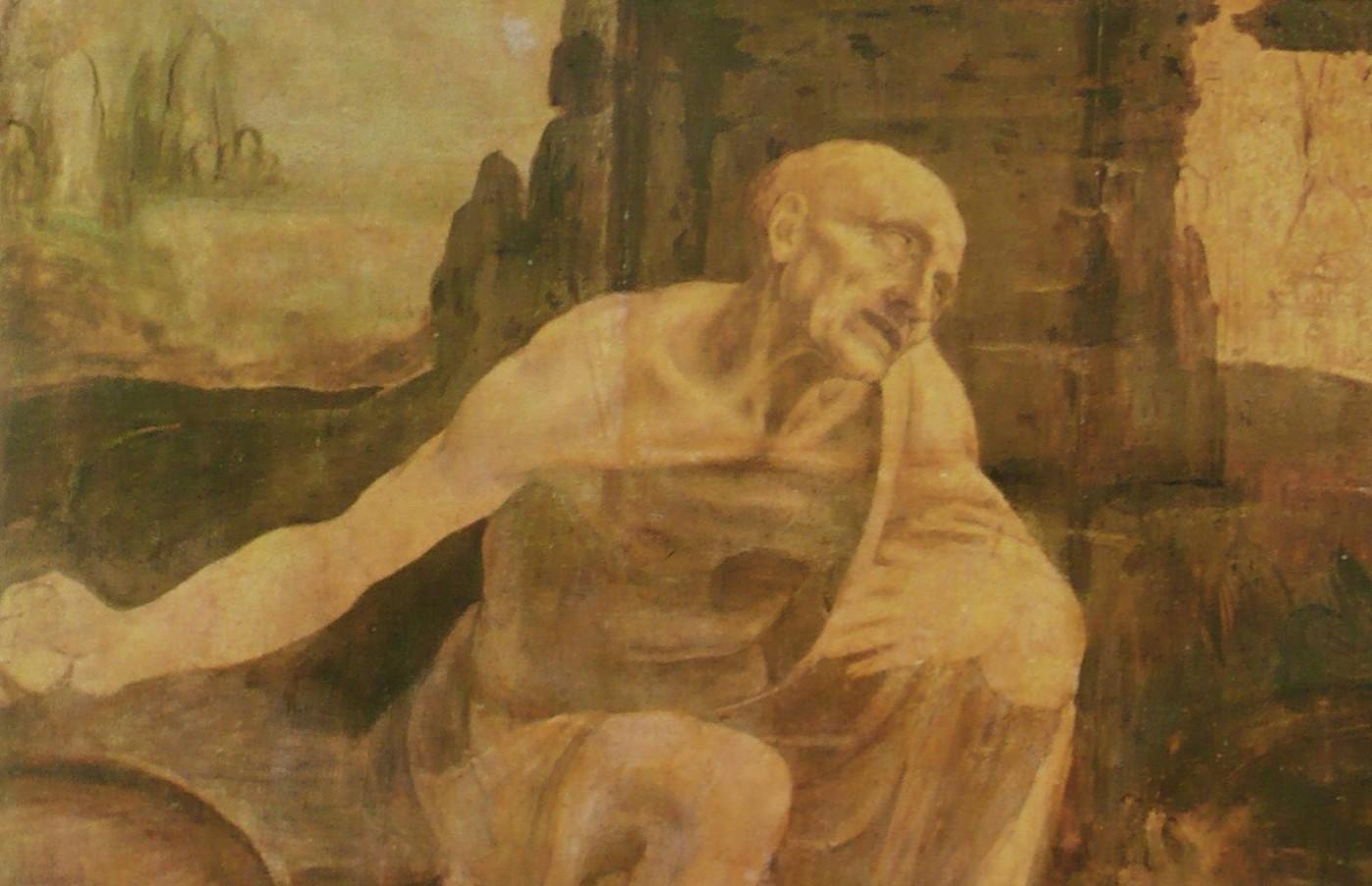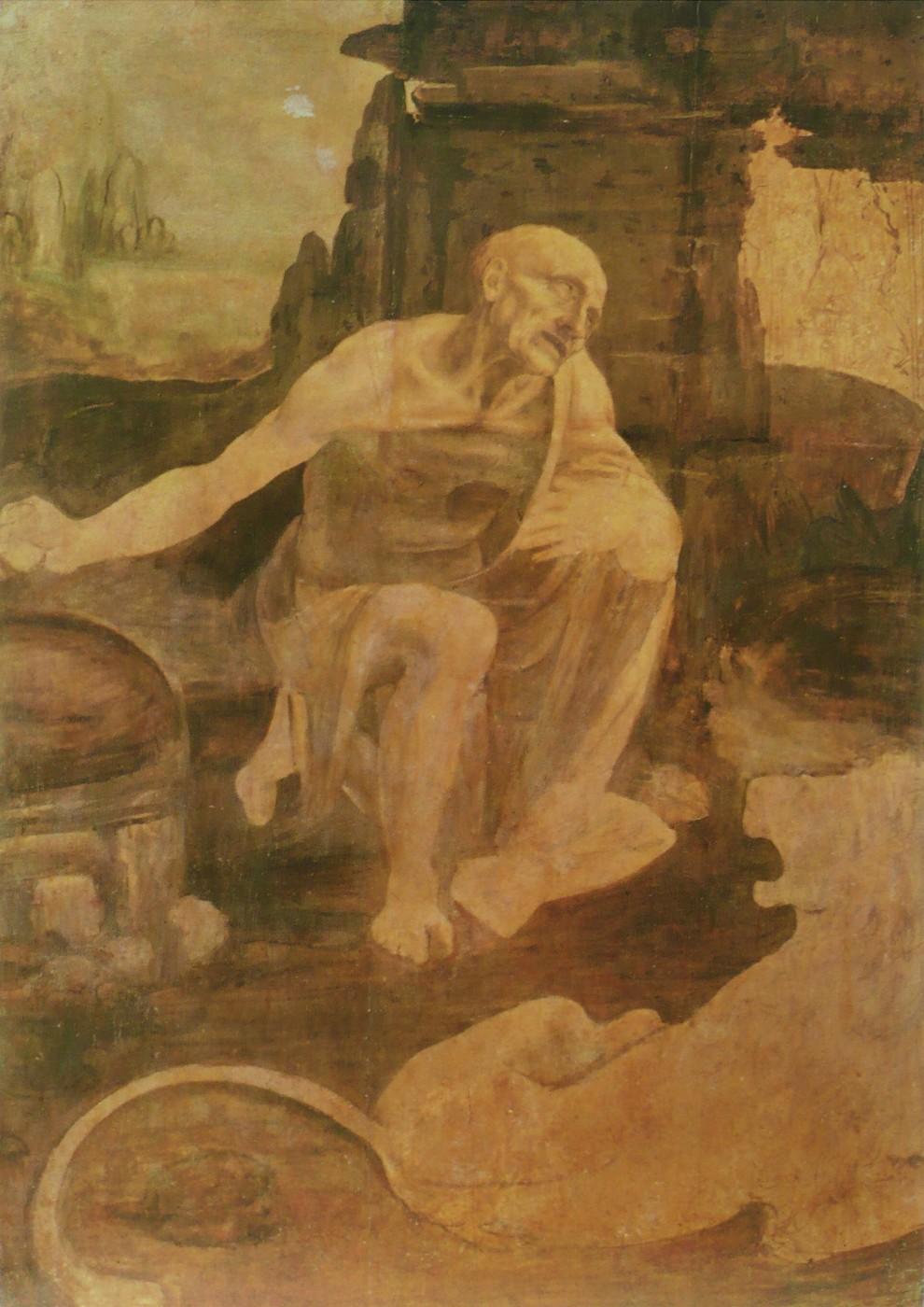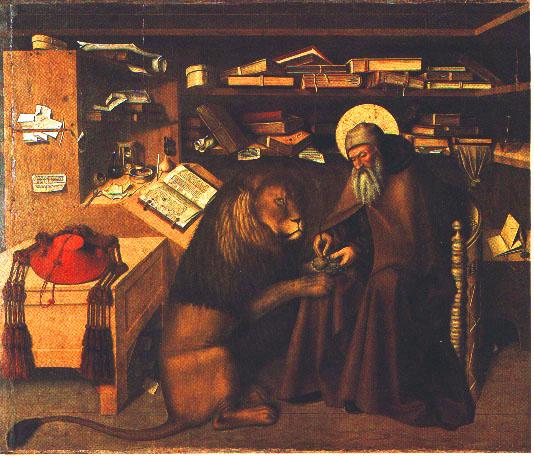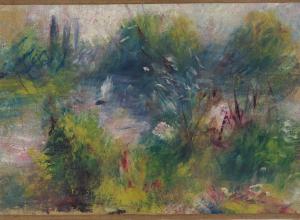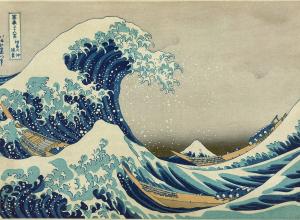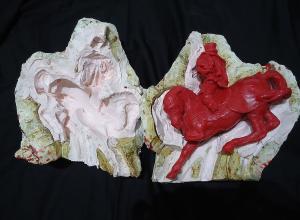Beginning this week, the Metropolitan Museum of Art will display the da Vinci masterpiece Saint Jerome Praying in the Wilderness, on special loan from the Vatican Museums. Begun in 1483, the painting shows Saint Jerome (c. 347 - 420) living as a hermit in the Syrian desert, clutching a rock used to beat his chest in penance.
Best known for his translation of the Bible into Latin, called the Vulgate, Saint Jerome was a biblical scholar and theologian. Upon his conversion to Christianity, Saint Jerome retreated to the desert for four years to devote himself to his studies, live a hermetic life, and bring himself closer to Christ’s teachings. According to legend, Jerome once removed a thorn from the paw of a lion, earning the beast’s devotion. The lion is often shown in depictions of Jerome, including da Vinci’s, where he sits at the anguished saint’s feet.
The unfinished painting shows the touch of the Renaissance master in several ways. Because the work is not completed, it gives us insight into da Vinci’s process, how he built up his canvases to create his works. Saint Jerome also gives us a rare brush with da Vinci through the artist’s fingerprints, which scholars have found embedded in the paint. Showing the literal touch of the genius, this subtle reminder da Vinci’s humanity helps us see beyond his incredible fame and legacy to the actual man behind the works.




